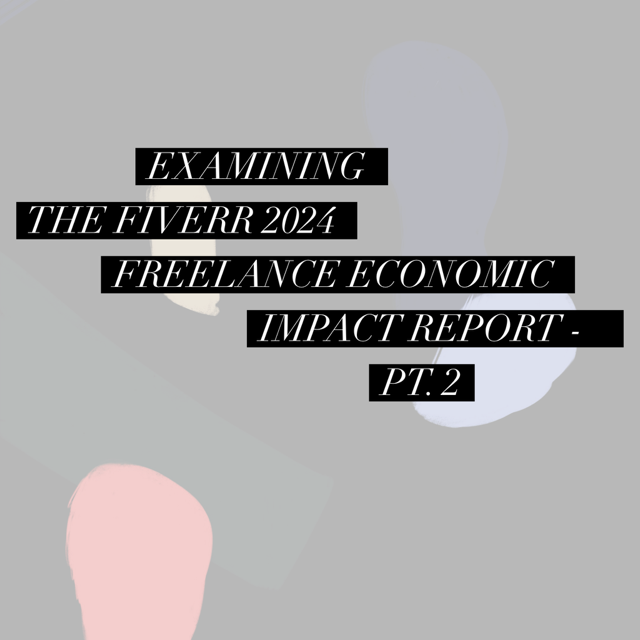
See part one of my discussions of the FIVERR 2024 Freelance report here. If you want to read the published FIVERR results, they can be found here.
Below are some additional findings from the survey I found interesting and my commentary on them:
- Side Hustles Prevail
29% of the freelancers in the FIverr survey hold a permanent job in addition to freelance work (in other words they freelance as a side hustle). Gen Z and Millennials are more likely to be side hustling. Across all side hustlers, 60% report they are very or somewhat likely to walk away from their permanent job and be fulltime freelancers. - Freelancing Continues to Grow
There has been a 10% rise in 2 years in the number of respondents who only work freelance (61% in 2021 to 71% in 2023). - Freelancers are Betting on Themselves
94% of freelancers invested some of their revenue on their business (61% on software/technology, 58% on other equipment or materials, 45% on sales and marketing, 31% on upskilling, and 23% on acquiring artificial intelligence tools, software or platforms). This investment in themselves as freelancers speaks to me of a growing confidence in the viability of freelancing by freelancers. - Upskilling to be Competitive
65% engaged in upskilling in 2023 (rising to 79% of Gen Z respondents) driven by the 89% who agree that clients want to work with freelancers with specialized skills and expertise. 42% plan to increase their upskilling in 2024. Benefits of upskilling are reported as: increased confidence (62%), improved work quality (60%), greater personal fulfillment experienced (55%), boosted productivity (50%), more work won (40%) and ability to charge higher rates (28%) (p. 6). This can be reflected in the increase of coaches and training courses specifically targeting the freelance worker. - Flexibility is Paramount
Location flexibility is very important to 84% of female freelancers and 68% of male freelancers. This is a general trend seen post-COVID where significant numbers of workers want to retain the work flexibility they gained during lockdown and many are turning to freelancing to achieve this. - The Relationship Between Caregiving and Freelancing
29% of women and 16% of men identify that flexibility is important for caregiving responsibilities. 24% of Gen Z/Millenials are in a caring role and 21% of Gen X/Boomers provide care for someone else. While many of the younger cohorts are looking after children, 46% of Gen X/Boomers care for an ageing family member. If employers want to retain employees and not have a greater exodus towards flexible freelancing, they are going to have to do a better job of addressing the needs of workers who are also caregivers. - Where To Find Work?
Top 5 sources of work for freelancers: word of mouth/referrals/reputation (67%), social media (44.4%), freelance marketplaces (29%), online job sites (27%), former employer (15%). Of the online job sites used 59% of independent freelancers use Fiverr and 52% Upwork. - Networks Matter
Reflecting the above statistics that 67% of work comes through word of mouth/referrals/reputation it’s not terribly surprising that a breakdown of where freelancers are focusing their skill building is as follows: enhancing networking abilities is most valuable to 39%, followed by technical skills (32%), communication skills (31%), and social media skills (30%). What is interesting to me about this is the higher proportion of ‘soft skills’ over ‘hard skills’ in this list.
There was quite a lot in this survey so look out for part 3 of my analysis!
Leave a Reply